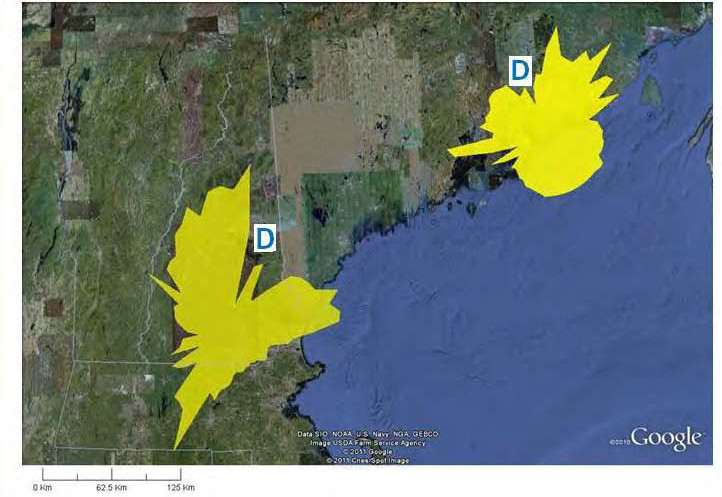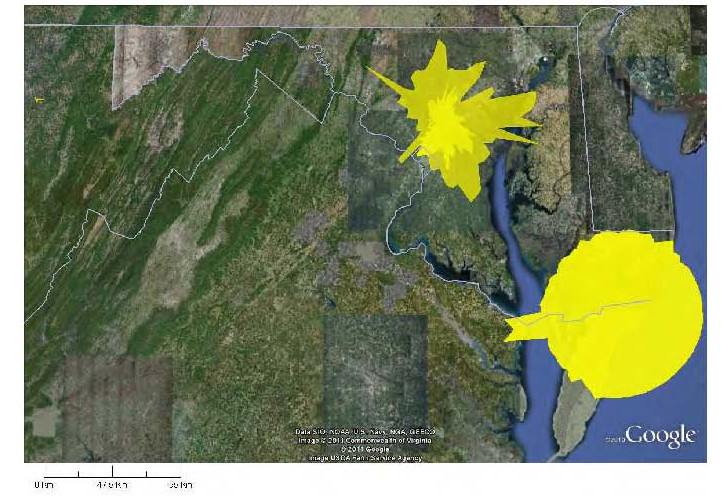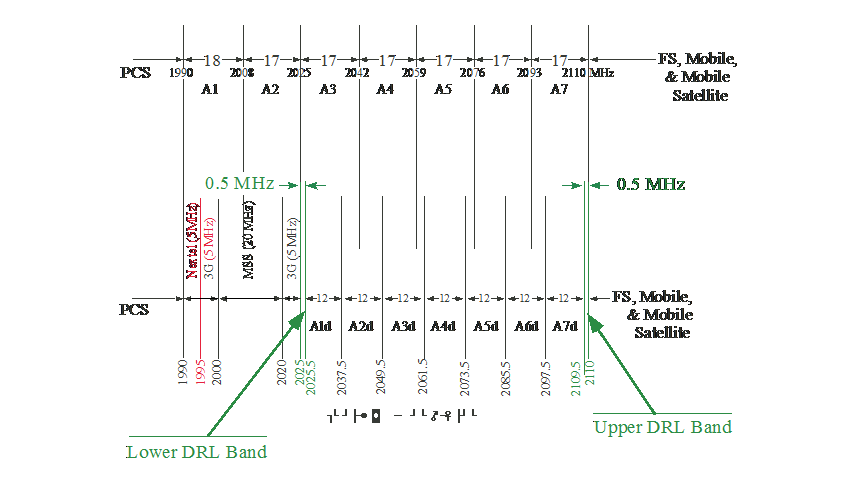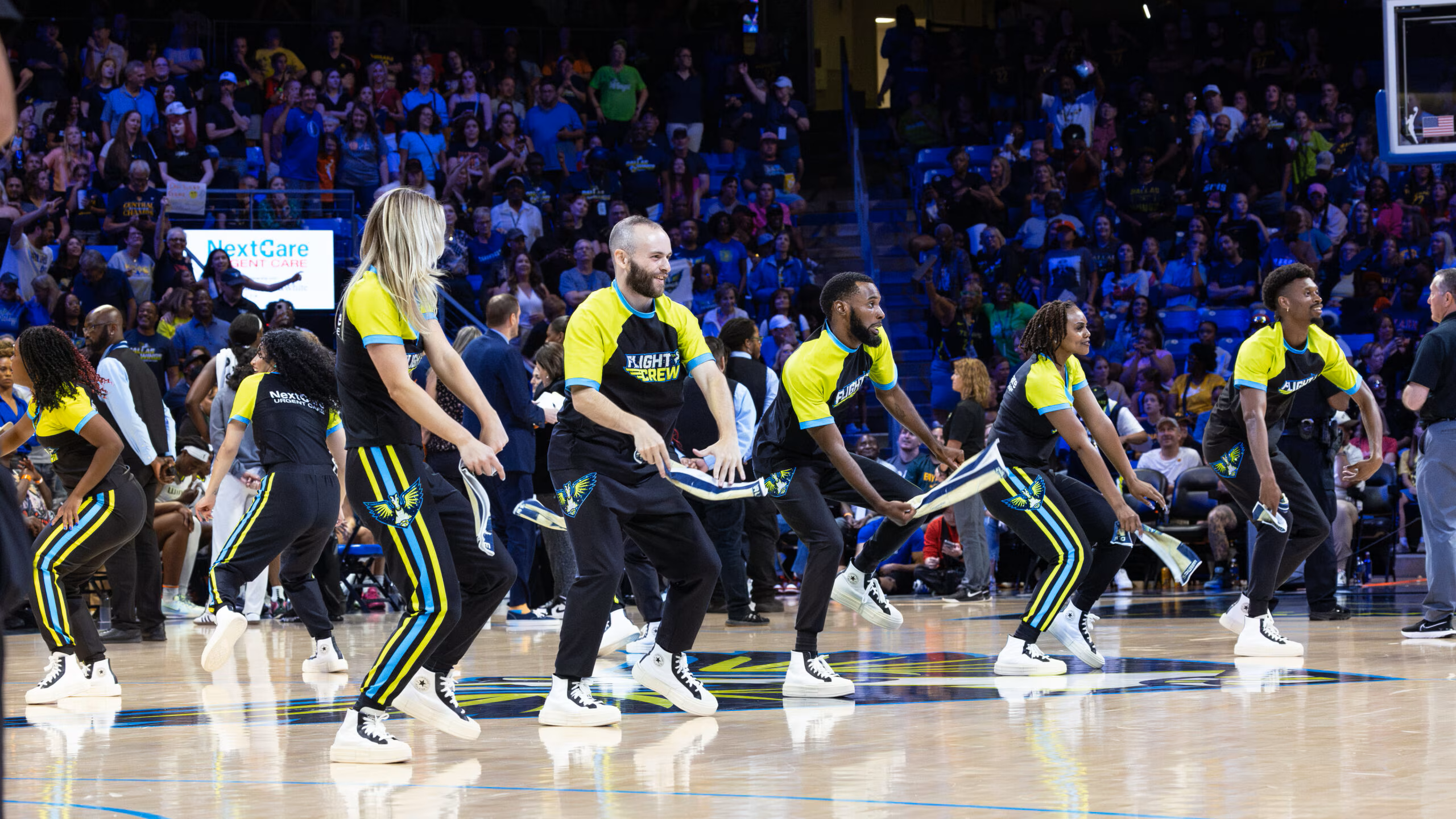DoD Increases Presence in 2 GHz TV BAS Band
WASHINGTON—In October 2004, the FCC gave the Department of Defense authority for limited operation in the 2,025–2,110 MHz TV Broadcast Auxiliary Services band (FCC Office of Engineering & Technology Docket 00-258 Seventh Report & Order). The operation was constrained to 11 fixed sites, for Space Ground Link System uplinks, which were then in federal government spectrum in the L-Band, at 1,761–1,862 MHz, (the 11 sites were specified in Footnote US346 to the FCC Table of Allotments). These uplinks were required to protect all existing 2 GHz TV BAS operations, including mobile (TV Pickup) ENG operations. Click on the Image to Enlarge
Click on the Image to Enlarge
Click on the Image to Enlarge
To that end, on April 30, 2009, the Society of Broadcast Engineers and the DoD negotiated a formal Memorandum of Understanding that required protecting the noise floor of ENG receivers not just to the 1 dB noise threshold degradation criteria specified in Section 2.5.5 of EIA/TIA TSB-10F, but intentionally to an even more stringent 0.5 dB noise threshold degradation. This MoU was uploaded to the ET Docket 00-258 record on Dec. 29, 2009, by the Engineers for the Integrity of Broadcast Auxiliary Services Spectrum, to ensure its availability.
‘CAMEL’S NOSE’
In effect, this was a frequency re-use criteria, not a frequency sharing criteria. Frequency re-use means the two systems are engineered so that one does not cause interference to the other, whereas frequency sharing means that two systems can potentially cause interference to each other, and thus must employ some form of frequency coordination to avoid actual interference. Because the newcomer DoD use was for 11—and only 11—fixed sites, a frequency re-use basis rather than a frequency sharing basis was technically achievable.
EIBASS and SBE feared that this was a “camel’s nose” situation; that is, a metaphor where the permitting of a small, seemingly innocuous act opens the door for larger, clearly undesirable actions. That concern has now proven correct: In the recently completed Advanced Wireless Services L-band spectrum auction, (GN Docket 13-185), many DoD operations are to be shifted from the 1.8 GHz L-band to the 2 GHz TV BAS band. The L-band spectrum auction brought in $45 billion to the Federal coffers, by providing CMRS licensees access to spectrum formerly used only by DoD and other federal government operators.
The March 31, 2014, GN Docket 13-185 R&O expanded the limited DoD co-primary status in the 2 GHz TV BAS band for just 11 specific sites and for SGLS uplinking only, to co-primary status without site restrictions and for a multitude of fixed and mobile uses by DoD. This included, for example, Small Unmanned Aerial Systems, Tactical Targeting Network Technology, Tactical Radio Relay and High-Resolution Video Systems.
REQUIRED PROTECTIONS
However, the GN 13-185 R&O included a clear requirement that newcomer DoD operations protect all incumbent TV BAS operations. According to new footnote US92 to the FCC Table of Allotments:
In the band 2025-2110 MHz, Federal use of the co-primary fixed and mobile services is restricted to military service and the following provisions apply:
Get the TV Tech Newsletter
The professional video industry's #1 source for news, trends and product and tech information. Sign up below.
(a) Federal use shall not cause harmful interference to, nor constrain the deployment and use of the band by the Television Broadcast Auxiliary Service, the Cable Television Relay Service, or the Local Television Transmission Service. To facilitate compatible operations, coordination is required in accordance with a Memorandum of Understanding between Federal and non-Federal fixed and mobile operations. Non-Federal licensees shall make all reasonable efforts to accommodate military mobile and fixed operations; however, the use of the band 2025-2110 MHz by the non-Federal fixed and mobile services has priority over military fixed and mobile operations.
(b) Military stations should, to the extent practicable, employ frequency agile technologies and techniques, including the ability to tune to other frequencies and the use of a modular retrofit capability, to facilitate frequency sharing of this band with incumbent Federal and non-Federal operations.
Wow, sounds pretty good. What could possibly go wrong with co-channel sharing with DoD, not directly subject to FCC authority or enforcement, and using the frequencies for lethal force applications? First, as best EIBASS has been able to tell, the MoU referenced in US92 is not the 2009 SBE-DoD MoU with its strict 0.5 dB noise threshold degradation criteria, but some new MoU to be negotiated between DoD and unspecified civilian users or groups, using an unspecified process, apparently outside of the FCC rulemaking process and likely not subject to Administrative Procedure Act safeguards. Certainly EIBASS has not been contacted and invited to participate.
Fig. 1: Potential interference areas that co-channel DoD operations might cause to TV ENG operations

Second, while the GN 13-185 rulemaking includes links to stringent NTIA protection criteria that newcomer CMRS auction winners will have to demonstrate are provided to those DoD and federal government operations remaining at L-band, it was silent on the technical details regarding how co-channel DoD operations would protect TV BAS operations, especially time-and location-variable ENG use.
Fig. 1 cont.

Indeed, an NTIA document, “Federal Government Spectrum Use Reports 225 MHz to 5 GHz,” dated April 11, 2014, showed potential interference areas that co-channel DoD operations might cause to TV ENG operations that were appallingly large map areas (Fig. 1). The interference criteria was a 1 dB (not 0.5 dB) degradation of the noise floor of a protected co-channel receiver, and were based on an unrealistic receiving antenna gain of only 0 dBi and a receiving antenna height of just 2 meters AGL. An analysis by EIBASS of TV Pickup station ENG receive data shows the average receiving antenna gain is 20 dBi, and the average receiving antenna height is 141 meters AGL. Thus, it is clear that the NTIA maps underestimated the interference areas.
A POSSIBLE SOLUTION?
By way of links to NTIA, the GN 13-185 rulemaking went into great detail regarding the protection requirements and showings that CMRS licensees entering the 1.8 GHz L-band would have to demonstrate are provided to DoD operations remaining in that band. In stark contrast, no technical details were provided on how DoD would fulfill its US92(a) obligations to not cause interference to existing co-channel TV BAS operations, and also to “not constrain” ENG.
One has to wonder how such a feat will be accomplished. It’s a tall order, since frequency sharing by DoD implies a monitoring ability that does not have a “hidden node” problem; that is, if a polite protocol monitoring receiver does not have a sensitivity at least as good as the system it is protecting, DoD will not be able to detect when a particular ENG channel is in use, and select a different frequency. Since ENGRO sites oft en use high-gain remotely steerable parabolic dish antennas with low noise amplifiers, and high effective elevations, matching the sensitivity of a large market TV station’s network of ENG-RO sites is no small undertaking.
However, there is a possible solution being developed by Dr. Mark Henry of Shared Spectrum Co.: use the Data Return Link channels from the ATSC A/82 Automatic Transmitter Power Control Data Return Link standard as a means of allowing DoD to use Dynamic Spectrum Access to avoid in-use 2 GHz ENG channels.
Fig. 2: In 2003, the FCC adopted a plan suggested by the SBE. Instead of refarming the 2 GHz band into six 12.1-MHz wide channels and one 12.4-MHz wide channel, the band was refarmed into seven exactly 12-MHz wide main channels, and the remaining 1 MHz was used for the lower and upper DRL bands, each 0.5-MHz wide.

As a result of comments filed by SBE, the DRL channels were adopted by the FCC in its Nov. 10, 2003, ET Docket 95-18 Third R&O and Third MO&O. SBE suggested that instead of refarming the 2 GHz band into six 12.1-MHz wide channels and one 12.4-MHz wide channel, that the band instead be refarmed into seven exactly 12-MHz wide main channels, and that the remaining 1 MHz be used for lower and upper DRL bands, each 0.5-MHz wide (Fig. 2). Doing so keeps the center frequencies of the channels, and their splits, integer multiples of the 250 kHz synthesizer step resolution used by digital ENG radios. Whereas 12.1-MHz or 12.4-MHz wide channels would have required a 50 kHz synthesizer resolution to achieve the channel center frequencies.
The DRL bands are subdivided into twenty 25-kHz narrow band channels. The intent is to allow automatic transmitter power control (ATPC), in support of split-channel operations in the Category I ENG markets. Split-channel operation requires approximately equal amplitude incoming ENG feeds, and an ATPC system could be used to back off the power of a feed from a nearby ENG truck to match the signal level of an ENG truck transmitting from a more distant location. As a result of the formal FCC adoption of the SBE 2 GHz band plan, the ATSC’s Technology & Standards Group authorized the creation of a Subcommittee 3 Specialist Group on Digital ENG (TSG-S3). TSG-S3 began work on a technical standard for the DRL channels in 2004, culminating in the A/82 DRL standard, adopted in 2008. Because of the narrow bandwidth and 25KG1D 19.2 kbps QPSK digital modulation specified in A/82 for the DRL signal, the robust link budget for the DRL channels ensures that if an ENG truck can achieve lock for its incoming feed to an ENG-RO site, then a DRL receiver at the ENG truck should have no problem receiving the “handshake” DRL signal from the DRL transmitter at the ENG-RO site.
Even though hardware to implement the DRL channels is not yet available, the 1 MHz of DRL spectrum has proven useful as de facto guard bands against high-power CMRS base stations in bands immediately below and above the 2,025–2,110 MHz TV BAS band. However, the now greatly expanded use of 2 GHz by DoD—and the funding likely to be available to implement that expanded use of 2 GHz—suggests that the development of retrofit modules for the existing universe of modern, frequency-agile, modulation-agile, programmable ENG radios, to finally implement DRL channels, appears within reach. It matters not that the primary use of the DRL channels may turn out to be as polite protocol beacons to allow practical DSA (i.e., coordination) by DoD, and only secondarily to make split-channel operation more practical. The important feature is that a DRL transmitter on a high-elevation ENG-RO site would make it likely that DoD could reliably monitor these beacon signals, and provide a practical means of detecting all ENG activity in a given area; that is, avoiding the hidden node problem for polite protocol sharing.
The need for BAS operations in the 2 GHz band may disappear someday. For now, though, the DoD elephant in the room resembles the entire camel, and EIBASS and broadcasters must do everything we can to protect existing licensees.
Dane Ericksen, P.E., CSRTE, 8-VSB, CBNT, is co-chair for Engineers for the Integrity of Broadcast Auxiliary Services Spectrum (EIBASS), and was chairman of the ATSC TSG-S3 Specialist Group on Digital ENG (2004-2009).
